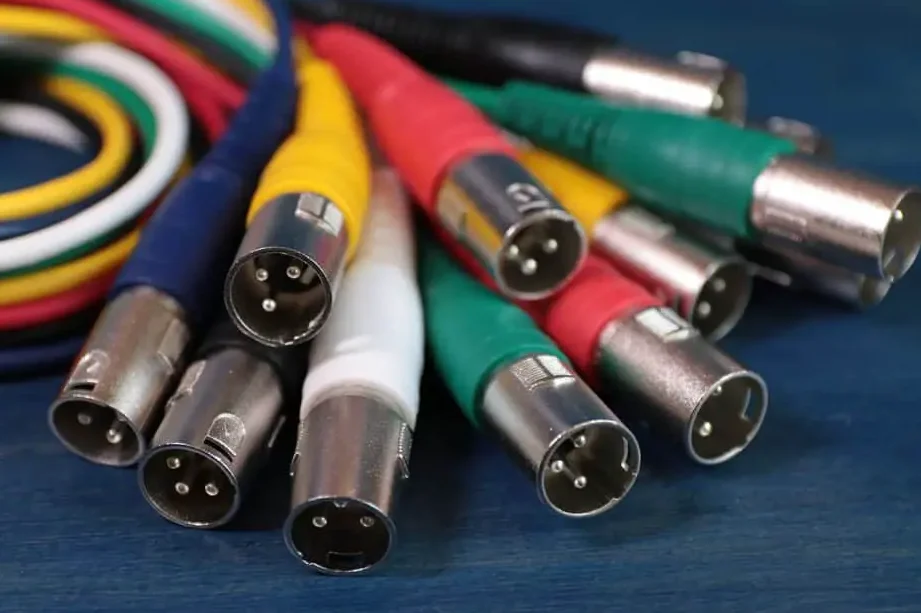In the world of professional audio, the XLR connector is the link that provides first-class sound quality, reliable communication, and a stable signal. A balanced cable with XLR connectors transmits interference-free audio over long distances, even in the event of electrical interference in the environment.
Connector Evolution
Over the years, the XLR connector has evolved to meet the ever-changing needs of the audio industry.
- While the original 3-pin round design remains the most common, variants with 4, 5, 6, and 7 pins have been developed for more complex audio systems.
- Four-pin XLR connector variants are the standard for 12-volt power in broadcast, movie, and television applications.
- Five-pin XLR connectors are used for some stereo microphones.
- Six-pin versions are used for stage lighting equipment and intercom systems, while seven-pin models are sometimes found on older condenser microphones.
XLR Connectors As The Standard For Transmitting Audio Signals
XLR connectors are the standard for transmitting audio signals in professional audio equipment such as concert sound systems, studio sound equipment, and microphones. Thanks to their reliable symmetrical signal transmission and reduced noise and interference, XLR connectors are used to connect microphones, studio monitors, and sound cards or interfaces.

Sound engineers connect sound consoles, amplifiers, and speakers. Many professionals use XLR connectors:
- Audio engineers
- Audio recording operators
- Video production
- Television equipment
- Lighting equipment
In home devices, the use of XLR may not be so fundamental when there are no strict requirements for the signal. In this case, cheaper types of connectors such as RCA or 3.5mm jack are used. Thus, for home-quality sound recording, mid-level XLR connectors with sufficiently high sound quality, but not as expensive as professional ones, are suitable. However, if sound quality is a top priority, you should already choose a professional-level connector.
Apart from the audio world, reliable XLR is used by medics to scan medical equipment. XLRs are also used by astronauts for stable communication and data transfer. Connectors and cables are used on spacecraft, satellites, and space communication devices to transmit signals by satellite antennas from orbit to earth. XLR is undoubtedly one of the world’s most well-known and used audio cable connectors.
What Xlr Audio Cables Are Used By Recording Companies
Recording companies use XLRs according to their audio signal requirements and budget. XLR cables come in a variety of lengths and quality categories. For connecting monitors and loudspeakers, high-frequency balanced XLR cables are most commonly found to increase the frequency of sound transmission between recording studios or at a concert. For recording vocals or instruments such as guitar, bass guitar, or drums, XLR-balanced microphone cables are used to provide a clean and reliable signal.
Microphone connections use balanced audio cables with three-pin XLR connectors, which have an XLR-F microphone cable on one end and a 1/4-inch phone plug on the other for connection to a mixing console or amplifier.
Why are XLR cables so popular in the professional audio world?
XLR cables are everywhere in the audio world. They are the standard for professional audio. XLR cables can be found on a variety of sound system devices, including loudspeaker systems, speakers, amplifiers, DMX stage lights, and synthesizers.
- They are balanced – reducing interference.
- They lock into place at the point of connection; this eliminates accidental disconnection.
- The dual connectors make it easy to splice into a long wire from shorter cables for long runs.
XLR cables are also suitable for live sound and use in public places. They are widely used for connecting audio equipment. For longer distances, thicker cable and better quality material may be required to avoid signal loss. It is also necessary to ensure the cable is connected securely and safely to avoid accidentally cutting the signal during live operation.

